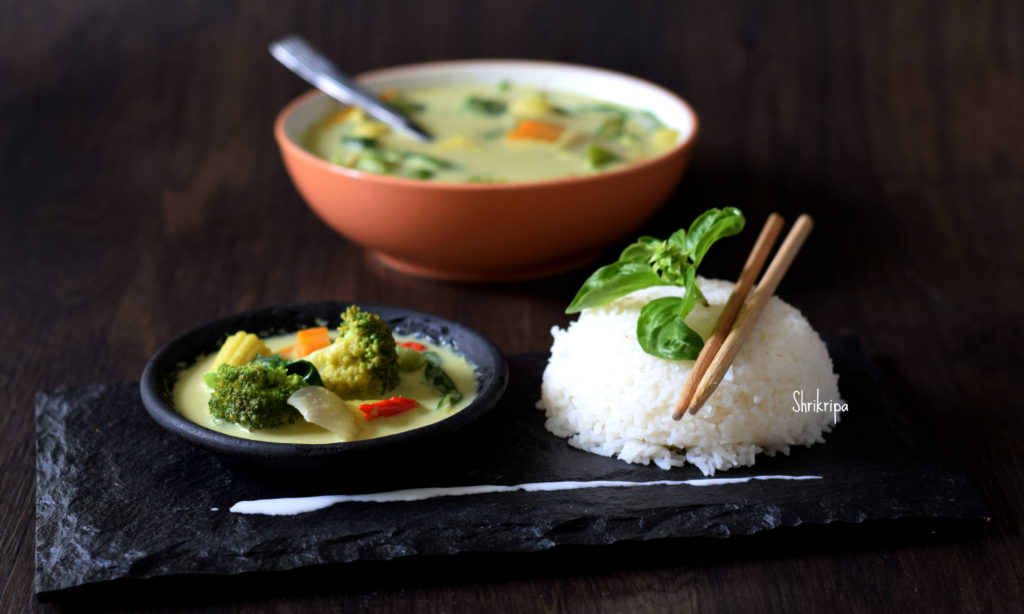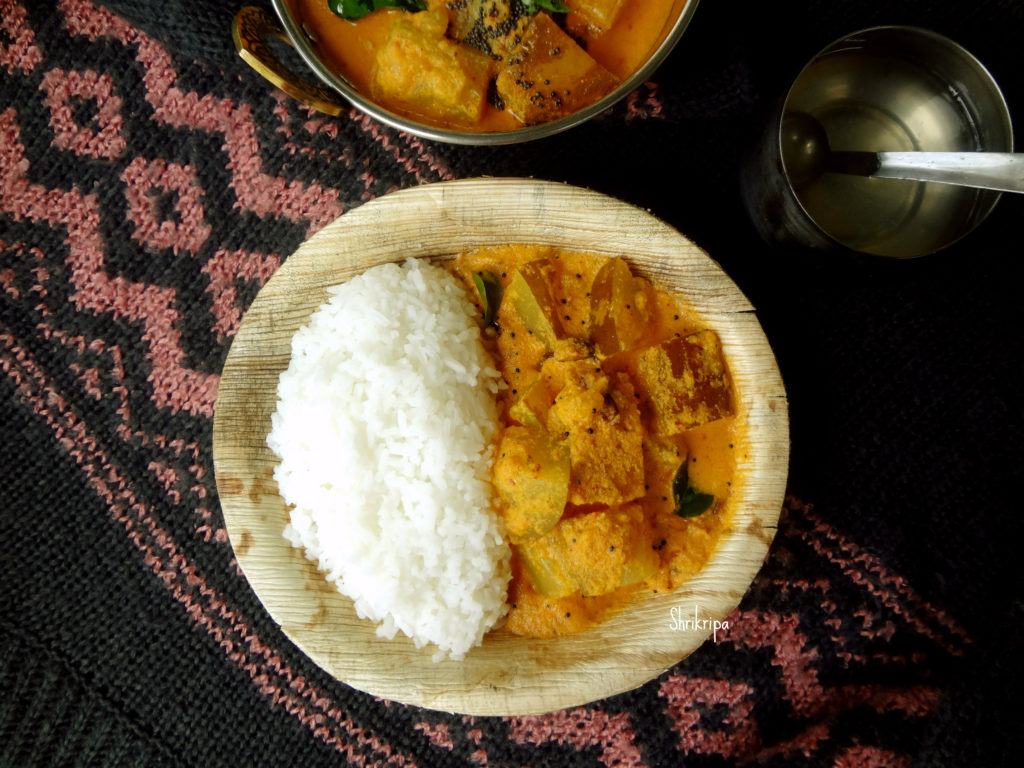Being a coconut eater, born and brought up in Coastal Karnataka, we like Thai food over any other cuisine. Thai green curry is our favourite and when it is with homemade fresh paste, nothing like it.
Homemade curry paste is very simple to make and loaded with rich flavour as well as delicious. It is the perfect menu for weekend family lunch.
 Pic credit: My daughter
Pic credit: My daughter
Three main ingredients which are very important is lemon grass, galangal (Thai ginger), Thai sweet basil and tender lemon leaves.
Instead of lemon leaves one should be able to use grated lemon rind (only outer layer) as well.
First, we will see the procedure for Fresh Green curry paste:

Ingredients:
Coriander seeds – 1 table spoon
Cumin seeds – 1 tea spoon
Turmeric – ½ tea spoon
Ginger – ½ inch
Garlic – 6 cloves
Galangal – ¾ to 1 inch (Thai Ginger)
Coriander leaves – 4 sticks
Onion – 1 small size
Green chillies – 8-10
Lemon grass bulb – 2
Pink salt – 1sp
Tender Lemon leaves – 3
Method:
-Slice ginger, galangal, onion, green chillies. Mine was home grown heirloom variety, which is less spicy. If your chilli is spicier, please remove inner seeds.

-Remove outer stiff cover from the lemon grass bulb. Then slice it and keep it ready.
-Put everything in the mixer jar and make a paste by adding very minimal water. Store this paste in an air tight bottle. This portion suffice for twice.
How to make Curry:

Ingredient:
Vegetables – Choice of yours
I have used Broccoli, baby corn, capsicum, carrot, beans and baby spinach.
Green curry paste – 2 table spoons
Salt
Sugar – 1 tsp
Corn flour – 1 tsp
Coconut milk – 1 tetra pack
Oil – 2 table spoons
Onion – 1
Basil leaves – 8
Red bird eye chillies – 2 (optional)
Method:
-Chop veggies, dice onions and separate each layer and keep aside.
-Heat oil, add onion and fry for 2 min. Add chopped veggies and fry for a while.

-Add green curry paste, salt, sugar and fry until raw smell vanishes.
-Add water,corn flour and boil, until veggies are half cooked. Add Coconut milk and give only one boil.

-Garnish with basil and red tiny chillies and serve with small grain rice.



















